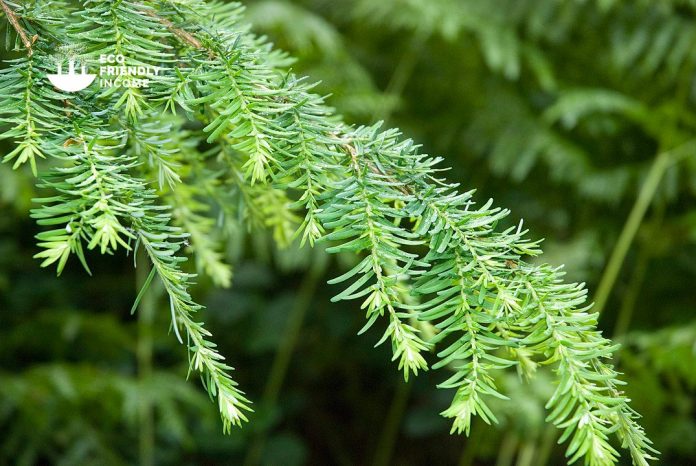
Featured Photo by Olivier Prichard / CC BY-SA 3.0
A field guide on how to identify and propagate Western Hemlock (Tsuga heterophylla), a conifer that is native to western North America.
How to Identify Western Hemlock (Tsuga heterophylla)
Leaves
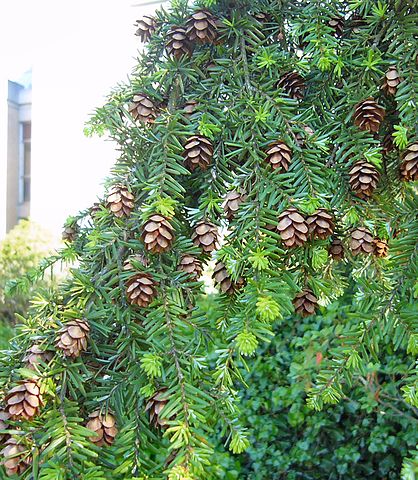
Western hemlock needles are linear in shape, with entire margins (smooth), and grow on the stems in alternate arrangements.
Bark
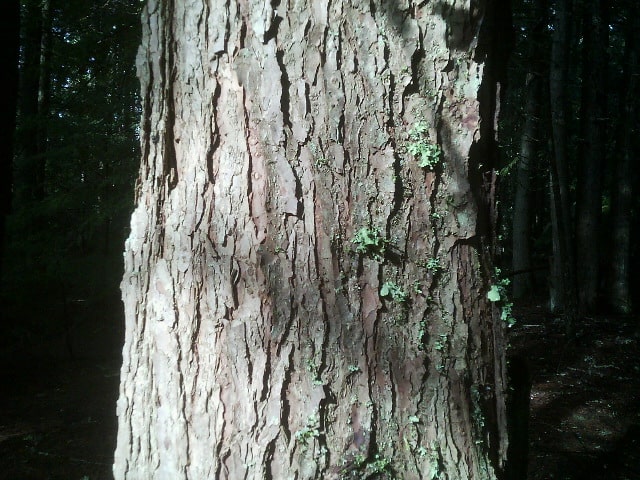
Western Hemlock trees have a thin, scaly bark that is gray-brown in color.
The bark is usually smooth on younger trees, but becomes more furrowed and scaly with age.
It often has small, interlacing ridges and grooves, which can be seen when looking at the trunk up close.
Cones
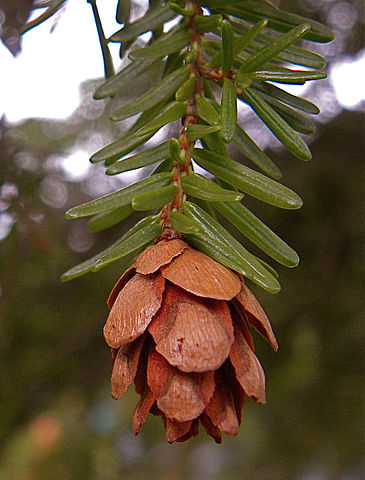
You can identify the seed cones by their small size and numerous amount.
They start off greenish to reddish-purple but will turn brown with age. The cones will become thick and strongly grooved and will be dark brown to reddish-brown in color.
Flowering Season
You can spot cones on the trees during summer, and they start to open during Fall.
You will start to see cones on hemlocks between 20 and 40 years old, and they can continue to produce cones for up to 450 years or even longer.
Hemlocks produce more cones than any other conifers in eastern North America, and they should produce at least some cones each year.
Habitat
Western hemlock is a tree that is native to western North America.
You can commonly find it in areas near water sources, such as the streams that form the heads of rivers, in cool and shady groves, and on slopes that face the north.
Some other understory plants that associate with western hemlock are:
- Bunchberry (Cornus canadensis)
- Western Skunk Cabbage (Lysichiton americanus)
- Ladyfern (Athyrium filix-femina)
- Alaska Huckleberry (Vaccinium parvifolium)
Wildlife Value
- Birds: Western Hemlock trees provide habitat for many species of birds, such as the varied thrush, and serve as nesting sites for some species of owls and woodpeckers.
- Mammals: Squirrels and chipmunks feed on the seeds and cones of the tree, while deer and elk browse on its twigs and foliage.
- Insects: Western Hemlock trees also provide habitat for various species of insects, such as moths and butterflies, and support food webs that provide sustenance for other wildlife species.
How to Propagate Western Hemlock (Tsuga heterophylla)

Hardiness Zone: 6-8

Soil Type: Clay, loam, sand.

Water: Normal to High.

Exposure: Full Sun to Full Shade.
There are two ways to grow western hemlock trees: stem cuttings and seeds.
If you use stem cuttings, you can get established trees more quickly, but it can be a bit difficult and has a lower chance of success.
On the other hand, if you use seeds, the chance of success is high, but it will take longer to get young trees that are well-established.
Since conifers are tricky to propagate by cutting, we’ll cover only the seed technique.
If you’re interested in making it work with cuttings, take a look at our cutting propagation guide for tips.
How to Propagate Western Hemlock (Tsuga heterophylla) by Seed
Propagating western hemlock by seed is a great way to grow more trees. The process is straightforward, but it takes time to get the seeds to grow into established saplings.
If you have eastern hemlock trees nearby, it’s best to gather the cones yourself for fresh seeds that are more likely to sprout.
But, if that’s not an option, don’t worry! You can easily buy eastern hemlock seeds online from Sequoiatrees.
Now, let’s go over the process of harvesting the seeds:
How to Harvest Seeds
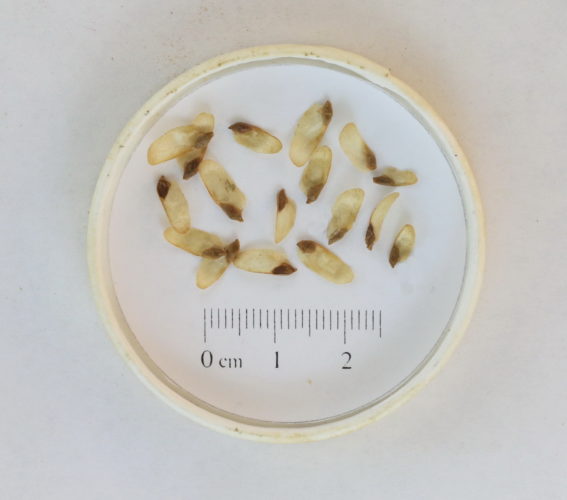
The seeds of the eastern hemlock tree are found inside the cones and are visible once the cones open.
To collect the seeds, simply gather some cones, allow them to dry out and open naturally, and then remove the seeds from inside.
When it comes to harvesting eastern hemlock seeds, timing is key.
The cones typically open up on their own by autumn, so it’s important to gather them before that happens. If you wait too long, the winged seeds may have already been dispersed.
The best time to harvest western hemlock cones is in late summer.
Stratification
Western hemlock seeds need to go through a process called stratification in order to sprout. This involves exposing the seeds to cold temperatures to break their dormancy.
Tip: Western hemlock, compared to eastern hemlock, requires a shorter dormant period since they naturally grow in warmer areas.
To mimic this process, we need to provide the seeds with similar conditions to what they would experience in the wild. Here’s how to do it:
- Put the seeds in a zip-lock bag with some sand and moisten it. Label the bag with the date and name of the seed.
- Store the bag in the freezer for 30 days.
- After 30 days, remove the bag from the freezer and soak the seeds in room-temperature water for 12 hours.
- Put the seeds back in the zip-lock bag with moistened sand, and store it in the refrigerator for 10 days.
By following these steps, you will be replicating the conditions the seeds would experience in nature, which will increase the chances of successful germination.
Once you’ve completed the stratification process, sow the seeds in a mixture of sand and peat moss, water them well, and cover them with plastic wrap to keep them moist. You can expect the seeds to germinate within a week.
FAQ
Q: How do you propagate western hemlock trees?
A: There are two effective methods to propagate western hemlock trees: stem cuttings and by seed. Stem cuttings provide faster growth but with a lower success rate, while propagation by seed has a higher success rate but takes longer for the saplings to become established.
Q: What are the best conditions for growing western hemlock trees?
A: Western hemlock trees thrive in moist, well-drained soil and prefer partial shade to full sun. They also require consistent moisture and need to be protected from harsh winds.
Q: How can I tell the difference between western hemlock and eastern hemlock?
The leaves of Western and Eastern Hemlocks look quite similar, with an appearance that resembles Yew trees. They both have two white lines on the bottom. However, Eastern Hemlocks have one difference: they have a line of leaves that face upwards on the top of the branch, causing the white undersides of the leaves to be visible.
Q: How long does it take for western hemlock trees to grow?
A: Western hemlock trees can grow up to 2-3 feet per year under favorable conditions, and takes from 20-40 years to reach cone-producing maturity.
Q: Can western hemlock trees be grown in containers?
A: Yes, western hemlock trees can be grown in containers, as long as they are given proper care and conditions, such as consistent moisture and partial shade.
Q: Are western hemlock trees suitable for bonsai?
A: Yes, western hemlock trees are suitable for bonsai and are popular among bonsai enthusiasts due to their attractive needle arrangement and adaptability to being trained and shaped.
